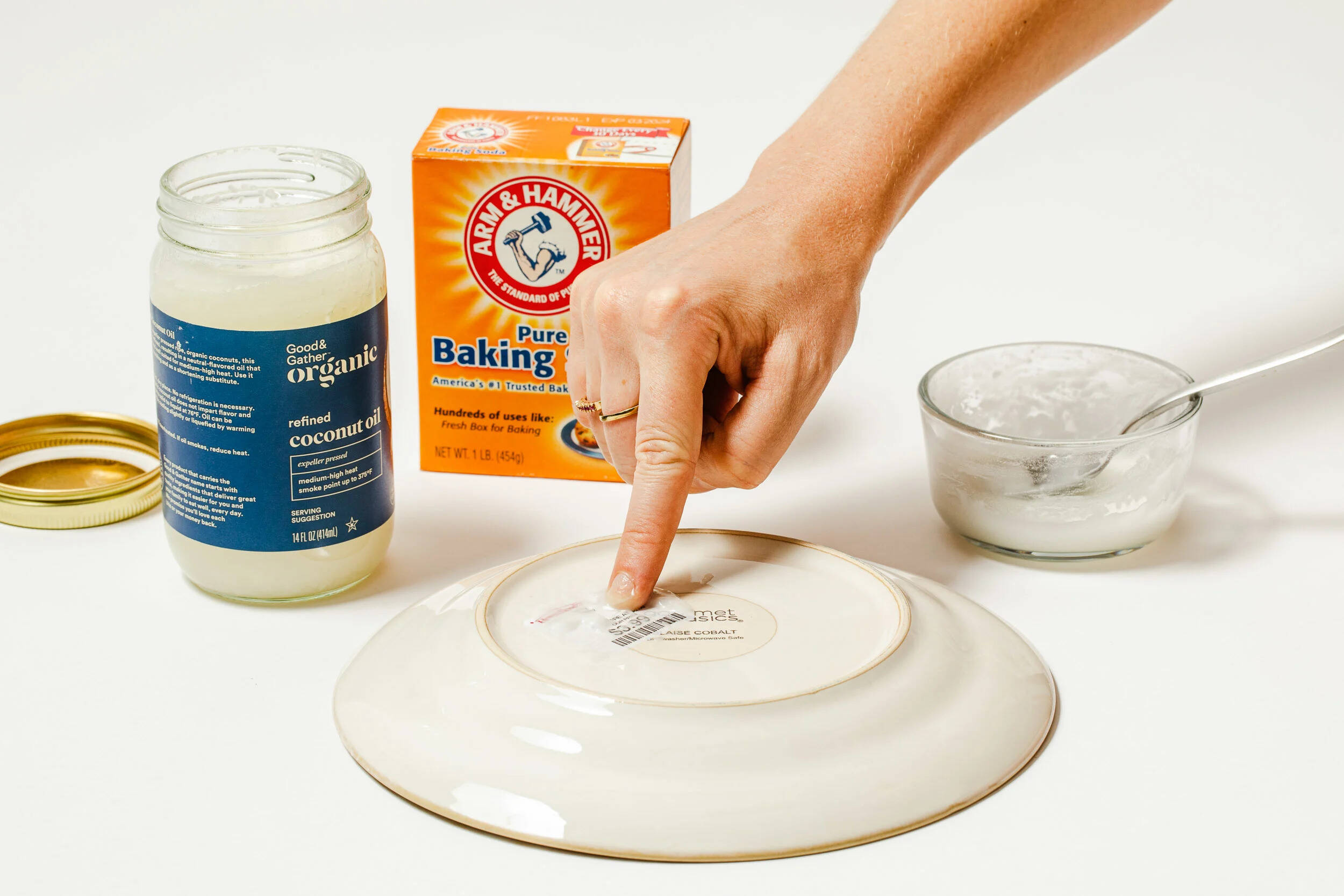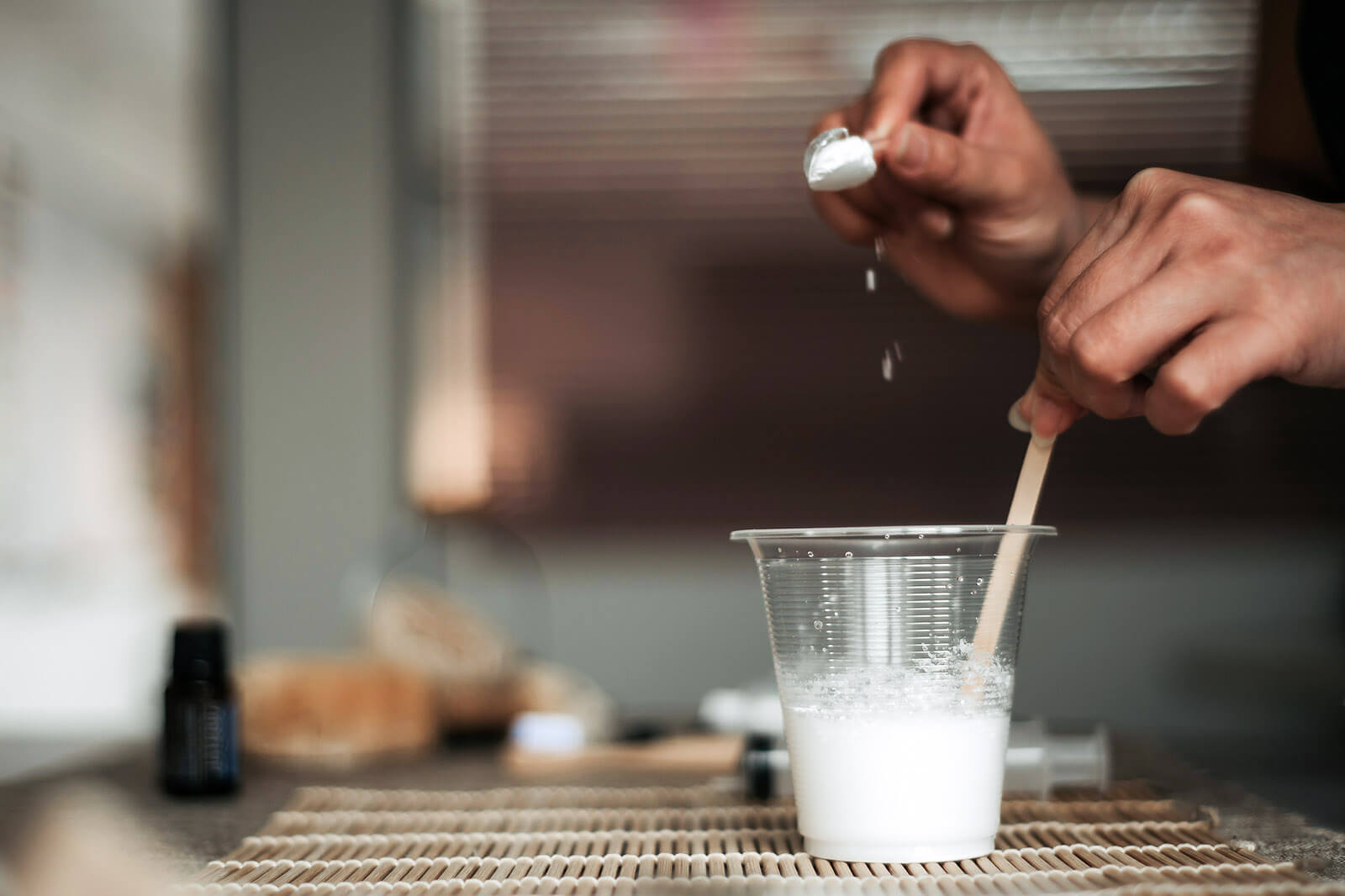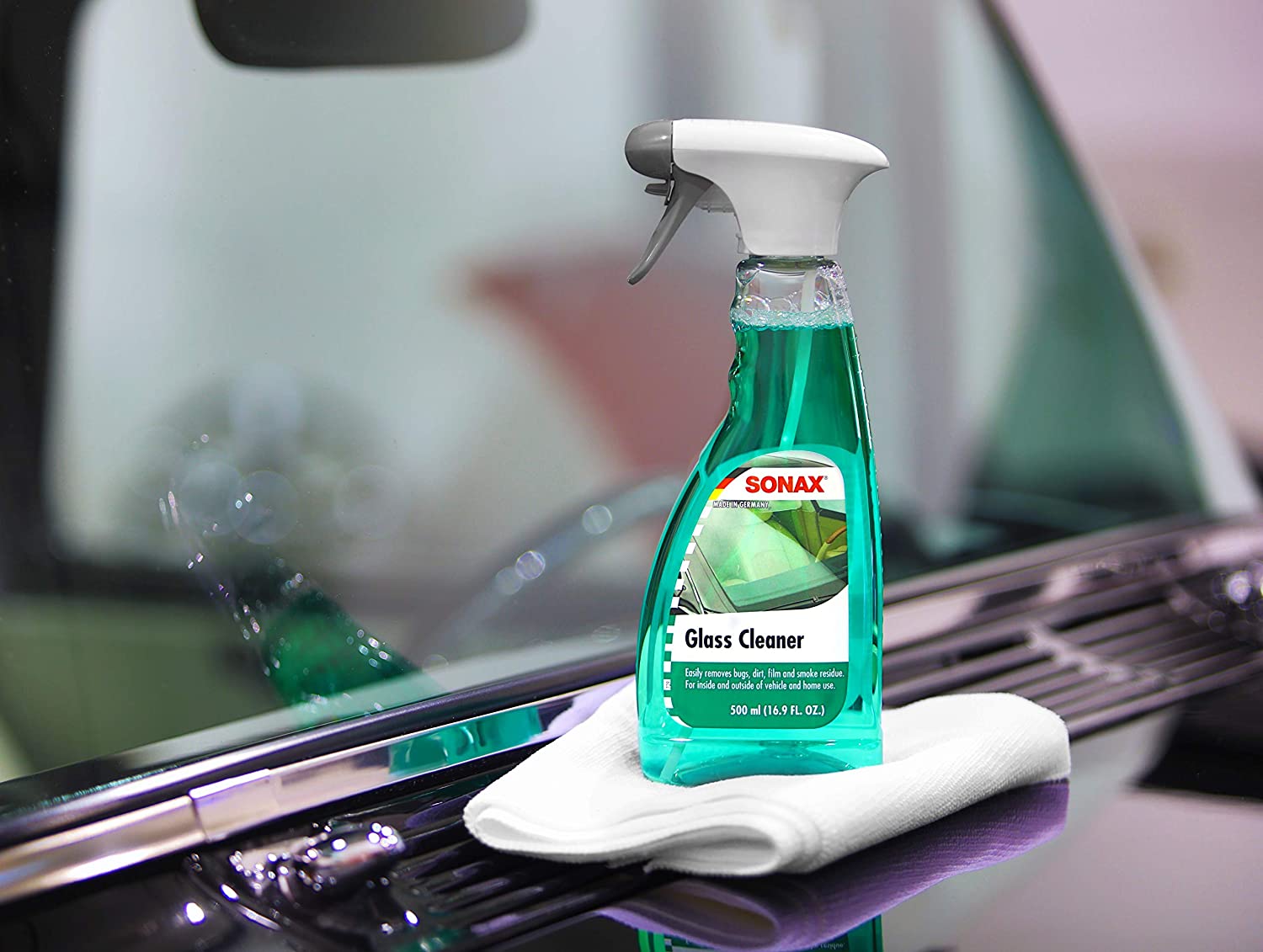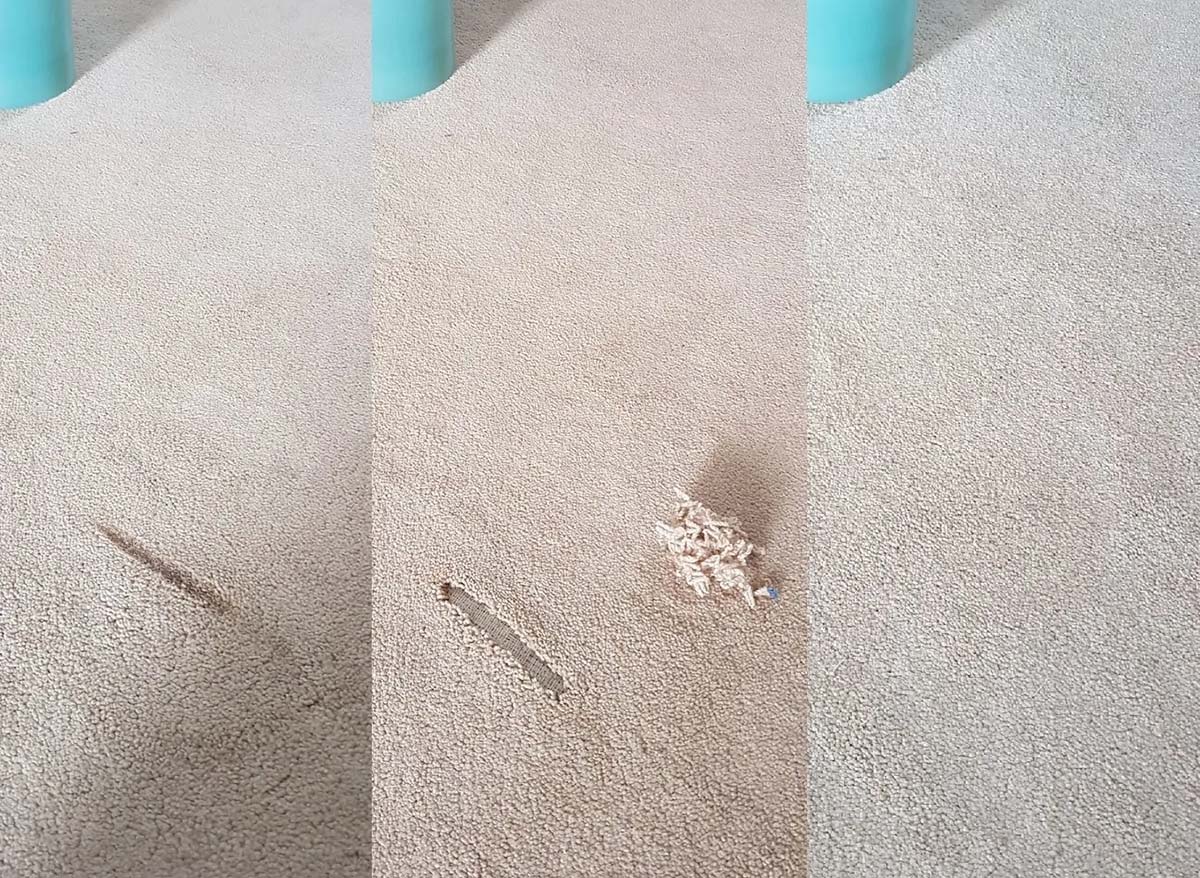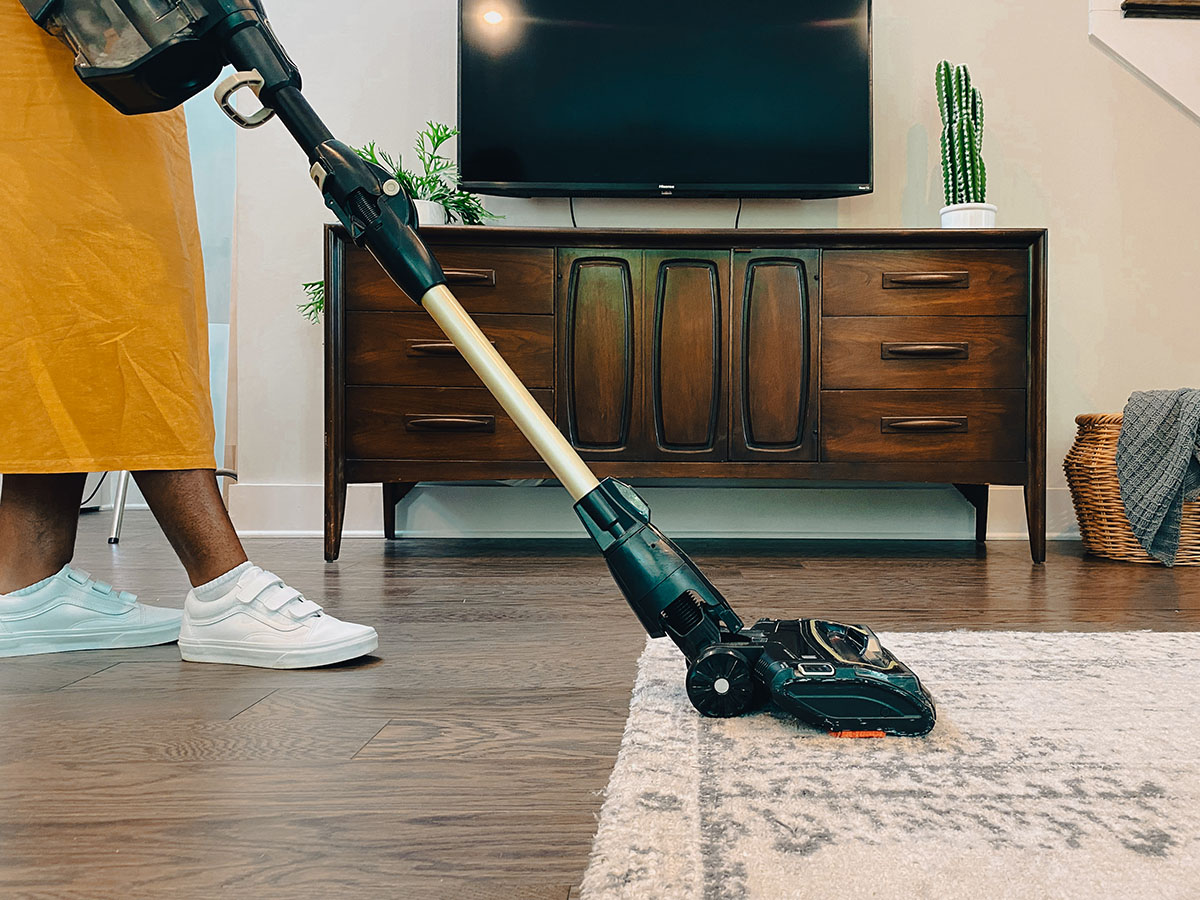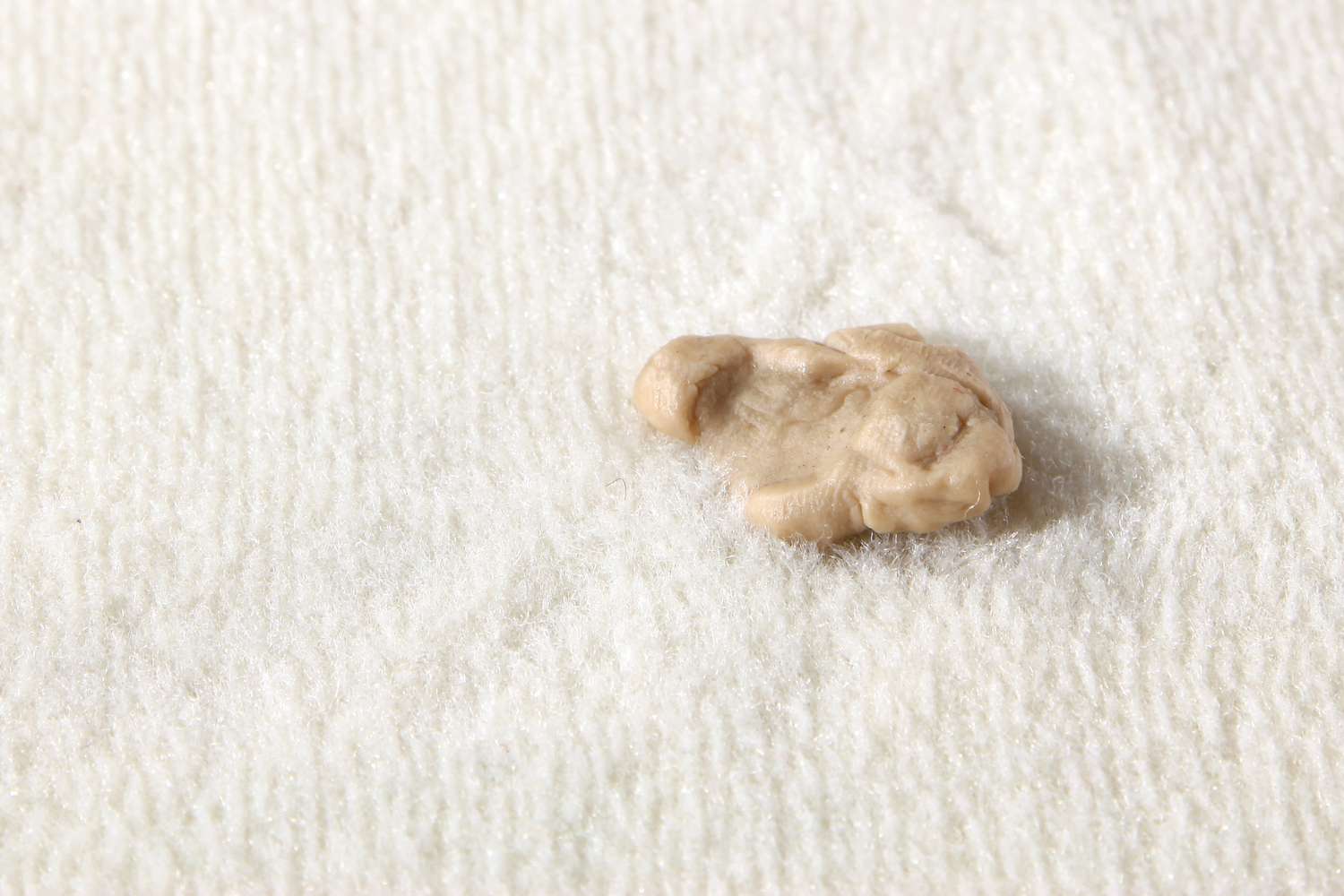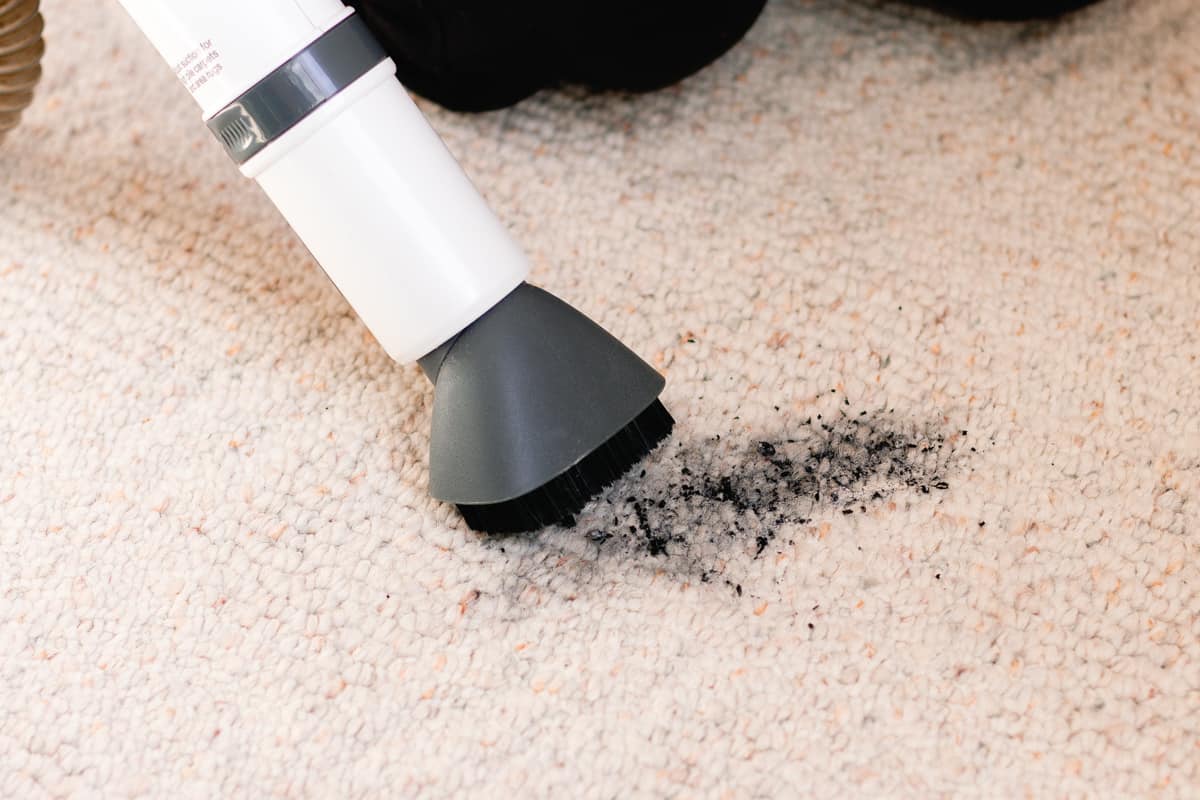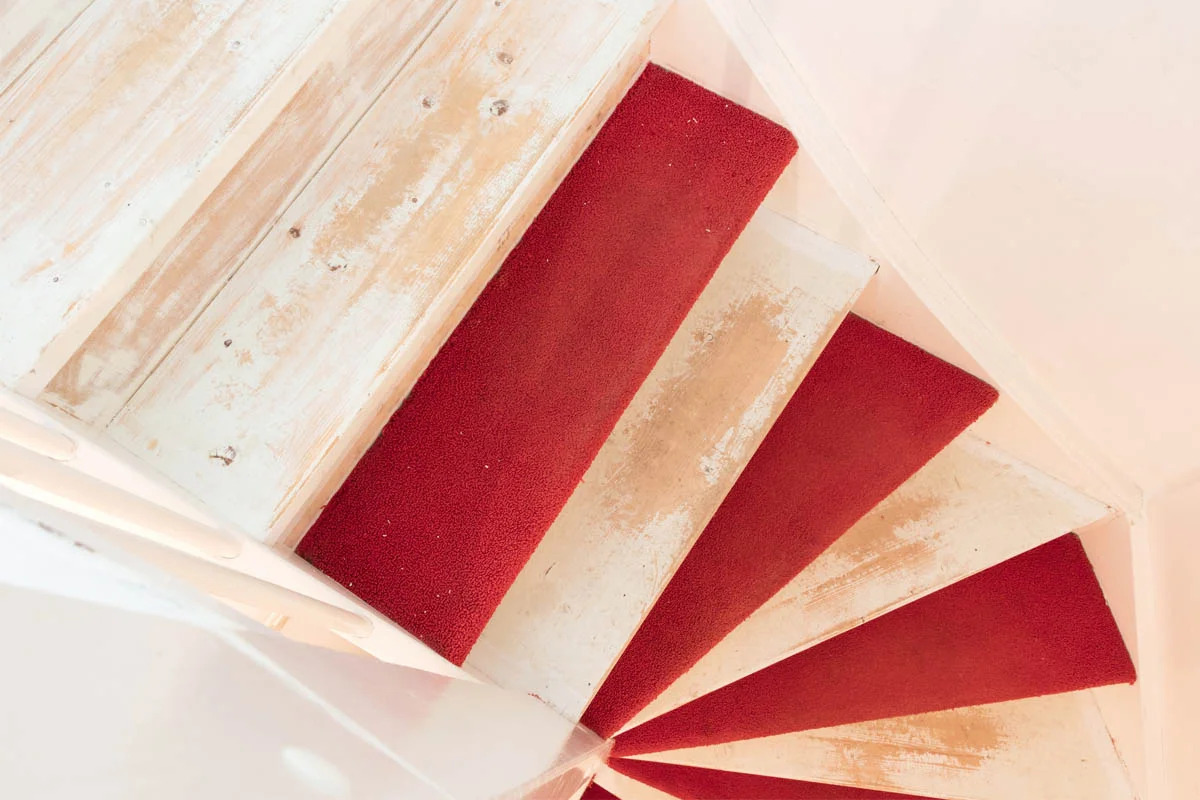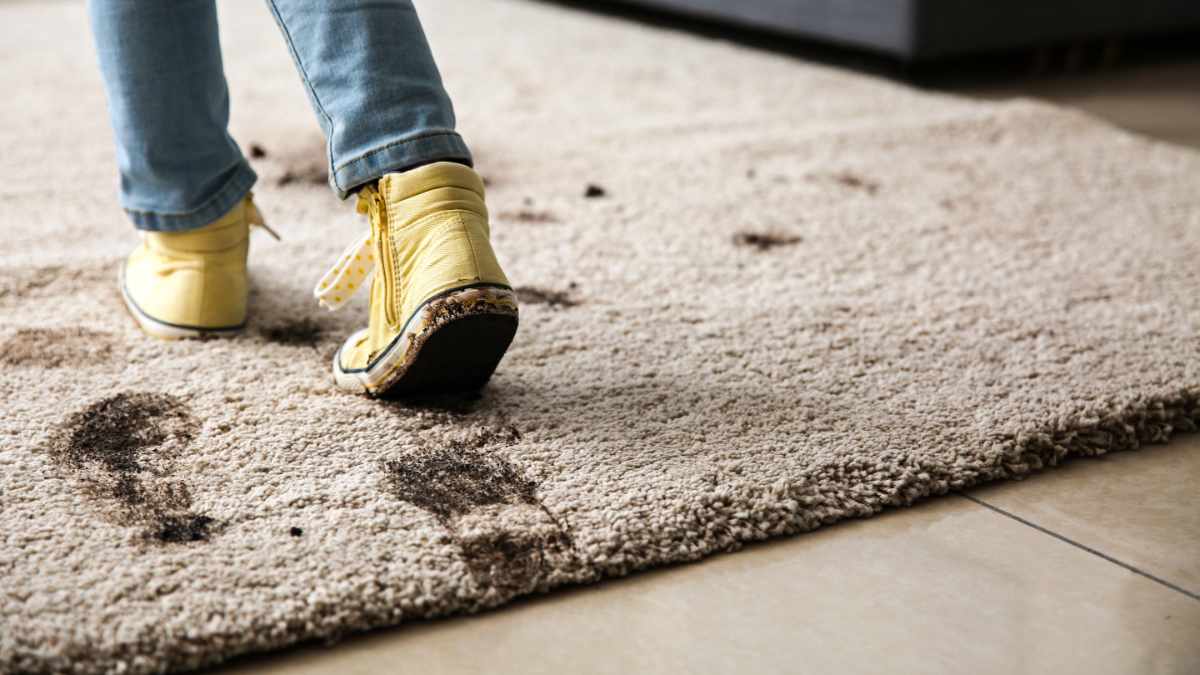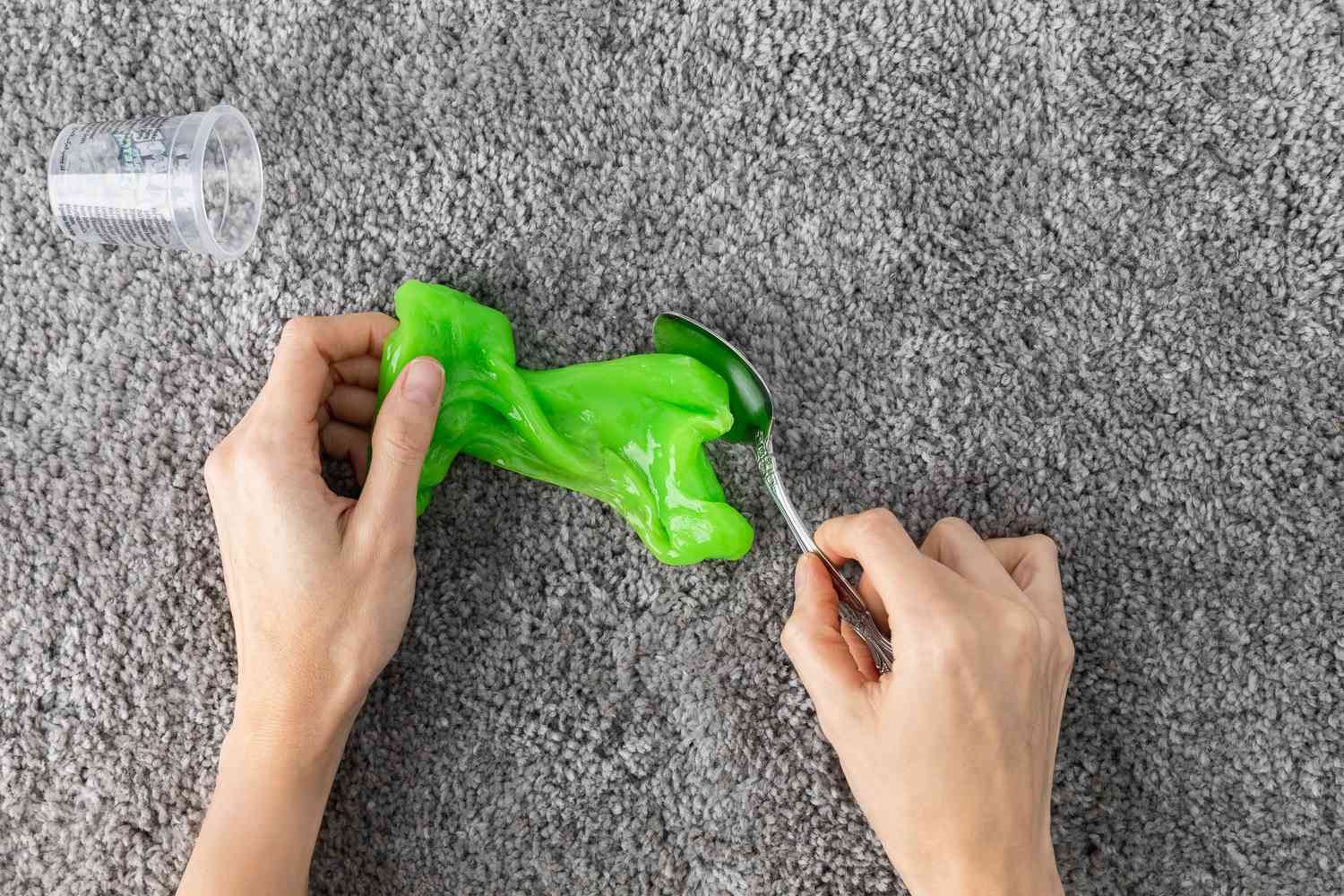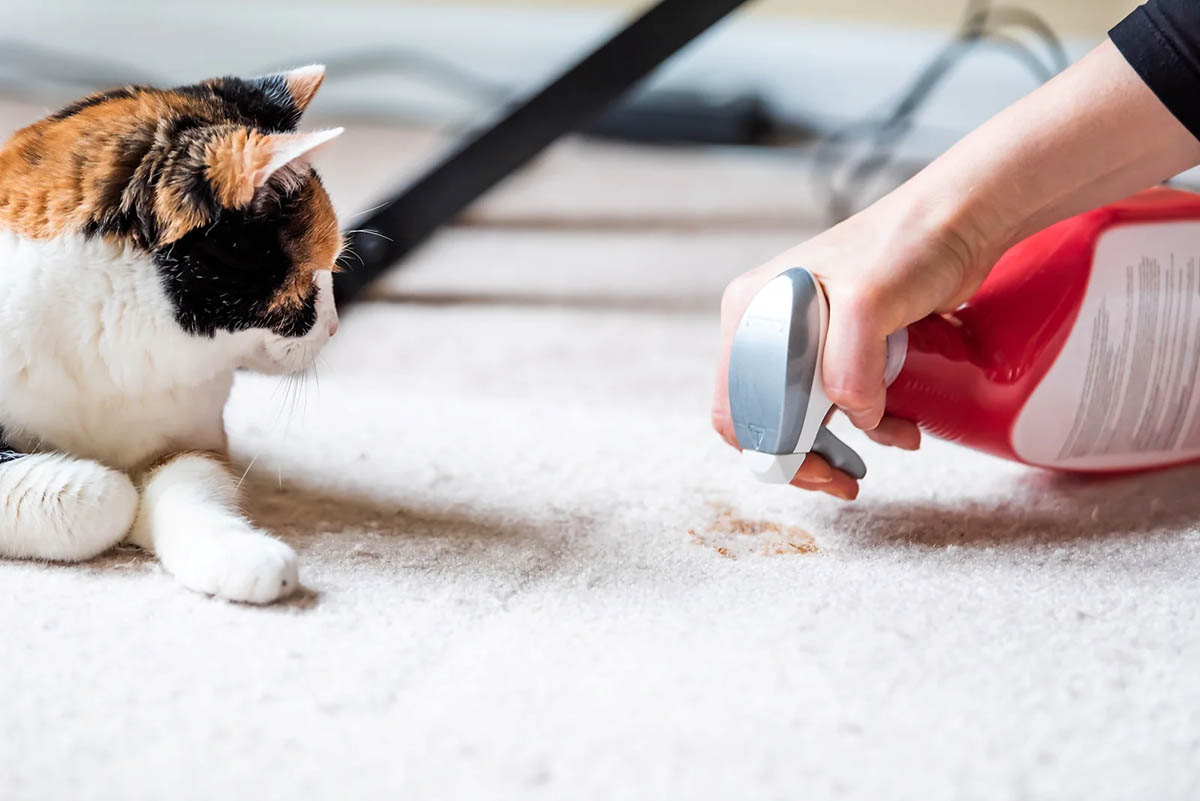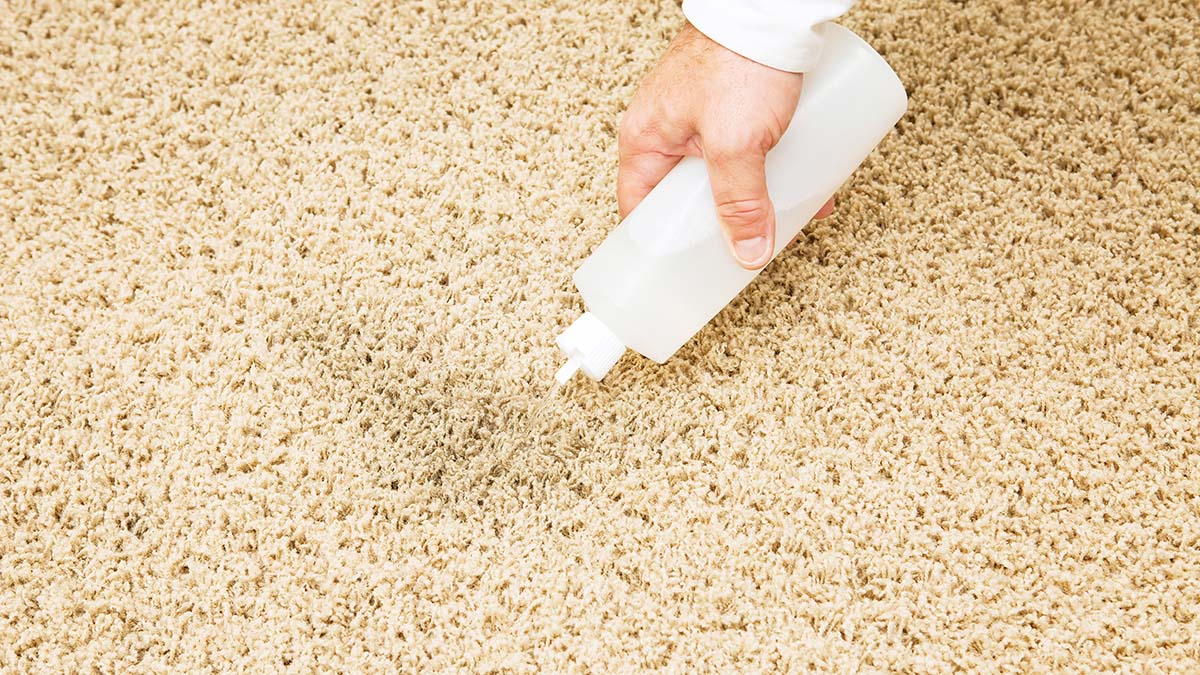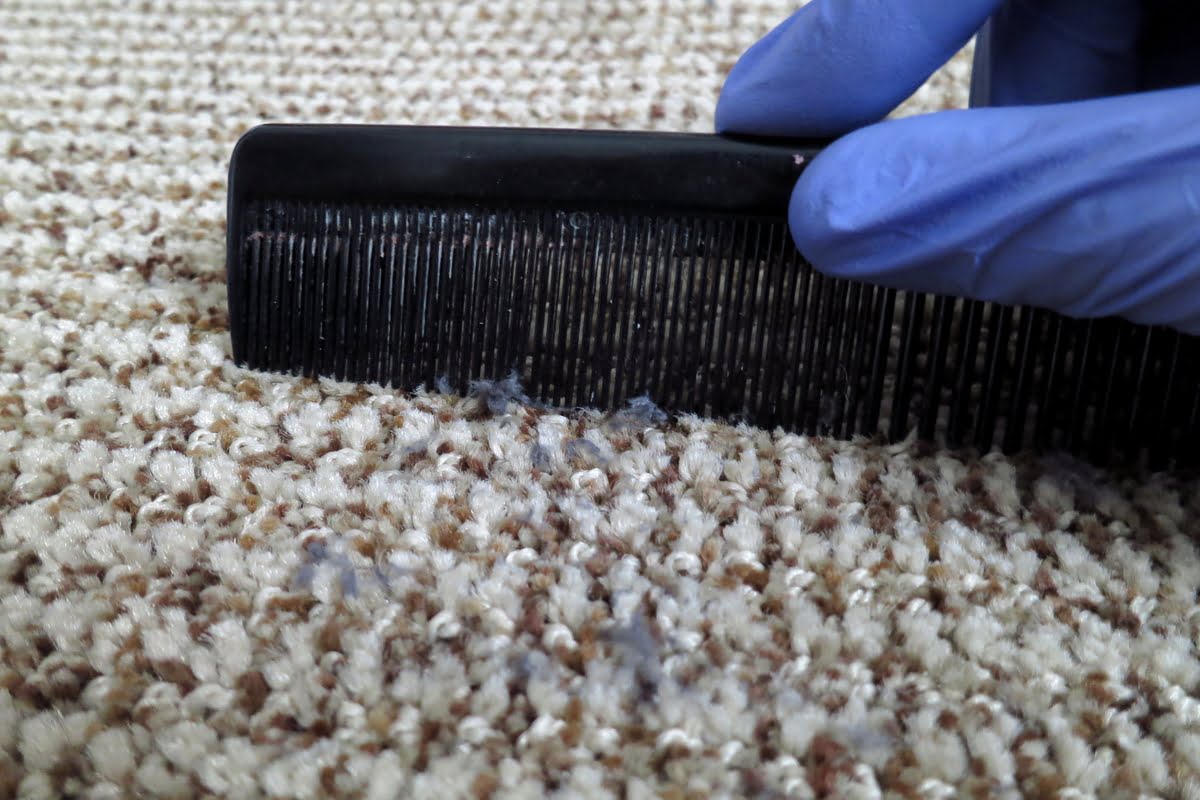

Articles
How To Remove Sticky Residue From A Carpet
Modified: September 1, 2024
Learn effective methods to remove sticky residue from your carpet with these helpful articles. Say goodbye to stubborn stains for good.
(Many of the links in this article redirect to a specific reviewed product. Your purchase of these products through affiliate links helps to generate commission for Storables.com, at no extra cost. Learn more)
Introduction
Having a carpet in your home or office can add warmth, comfort, and style to the space. However, dealing with sticky residue on your carpet can be quite a challenge. Whether it’s the result of spilled drinks, dropped food, or stubborn adhesives, sticky residue can make your carpet look unsightly and feel unpleasant to walk on. But fret not, as there are several effective methods you can use to remove sticky residue from your carpet and restore its original cleanliness and beauty.
In this article, we will explore various techniques and solutions for removing sticky residue from a carpet. These methods are simple, affordable, and can be done with common household items. You might already have some of these solutions in your pantry or cleaning cabinet!
Before we dive into the different removal methods, it’s important to understand the nature of sticky residue on carpets. Sticky residue can be caused by a variety of substances, such as gum, adhesive tape, spilled drinks, greasy food, or even pet accidents. When these substances come into contact with your carpet, they can leave behind a tacky residue that clings to the carpet fibers.
Removing the sticky residue requires a gentle yet effective approach to avoid damaging the carpet fibers. It’s important to tackle the problem as soon as possible to prevent the residue from further embedding into the carpet or attracting more dirt and debris.
Before you begin the removal process, make sure to inspect the carpet for any loose debris or dirt. Vacuum the area thoroughly to remove any loose particles that could interfere with the effectiveness of the cleaning methods.
Now that you’re armed with a basic understanding of sticky residue and have prepped the carpet, it’s time to explore the various methods you can use to remove the stickiness. Read on to discover the step-by-step instructions for each method, along with tips and tricks to achieve the best results.
Key Takeaways:
- Say goodbye to sticky residue on your carpet with natural solutions like vinegar, lemon juice, and baking soda. Restore your carpet’s cleanliness and freshness with simple, effective methods using common household items.
- From warm water and dish soap to commercial carpet cleaners, there’s a solution for every sticky situation. Tackle stubborn residue with patience and persistence, and enjoy a clean, inviting carpet once again.
Understanding Sticky Residue on Carpets
Sticky residue on carpets can be a common issue, but understanding its nature can help you address the problem more effectively. The sticky residue can come from various sources, such as spilled drinks, food, adhesives, or even pet accidents. These substances leave behind a tacky residue that clings to the carpet fibers.
One of the main challenges when dealing with sticky residue is its ability to attract dirt and debris, making the affected area look dirty and unappealing. If left untreated, the residue can become more embedded in the carpet, making it increasingly difficult to remove.
The composition of the sticky residue can vary depending on its source. For example, spilled drinks like juice or soda can leave behind sugary residues, while adhesives or tape can leave behind a sticky and gummy residue. Understanding the source of the residue can help you choose the most appropriate cleaning method to effectively remove it.
It’s important to note that different carpet fibers and materials may react differently to various cleaning solutions. Before trying any cleaning method, it is recommended to test it in an inconspicuous area of the carpet to ensure that it does not cause any discoloration or damage.
When removing sticky residue from carpets, it’s important to work gently and avoid harsh scrubbing or rubbing, as this can potentially damage the fibers and leave behind a noticeable spot or mark. Patience and persistence are key when tackling sticky residue, as it may require multiple attempts to completely remove the stickiness.
It’s also worth mentioning that older or more stubborn stains may require professional carpet cleaning services to fully eliminate the residue. If you have tried multiple methods without success, it may be time to seek professional help to restore your carpet’s cleanliness and appearance.
Now that you have a better understanding of sticky residue on carpets, it’s time to explore the different methods and techniques you can use to remove it. Each method offers a unique approach, so feel free to experiment and see which one works best for your specific situation.
Preparing for Removal
Before you begin the process of removing sticky residue from your carpet, it’s important to gather all the necessary materials and prepare the area for cleaning. Taking these steps will ensure that you have everything you need and create an optimal environment for effective residue removal.
Here are some important preparations to make before you dive into the cleaning process:
- Gather the cleaning supplies: Depending on the method you choose, you may need warm water, dish soap, vinegar, rubbing alcohol, lemon juice, salt, baking soda, commercial carpet cleaner, Goo Gone, ice cubes, WD-40, or a steam cleaner. Make sure you have these items readily available before you begin.
- Read the instructions: If you’re using a commercial carpet cleaner or any other cleaning product, it’s important to read the instructions carefully before use. Follow the recommended dilution ratios, application methods, and safety precautions to ensure effective and safe cleaning.
- Protect the surrounding area: Place towels or plastic sheets around the area you’ll be cleaning to protect nearby furniture or flooring from any potential spills or drips. This will make the cleanup process much easier and prevent any accidental damage to other surfaces.
- Test the cleaning solution: Before applying any solution to the stain, it’s crucial to test it in a small, inconspicuous area of the carpet. This will help you determine if the solution will cause any discoloration or damage to the fibers. Wait a few minutes and check for any adverse reactions before proceeding with the full cleaning process.
- Blot the residue: If there is any excess residue or spill, gently blot the area with a clean cloth or paper towel to remove as much of it as possible. Avoid rubbing or scrubbing, as this can push the residue further into the carpet fibers.
By taking these preparatory steps, you’ll set yourself up for success in removing sticky residue from your carpet. Having the right supplies on hand, understanding the instructions, protecting the surrounding area, and testing the cleaning solution will ensure an efficient and safe cleaning process.
Now that you’re fully prepared, let’s explore the different methods you can use to remove sticky residue from your carpet. These methods utilize common household items and are easy to follow, offering you a range of options to choose from depending on the materials you have available or prefer to use.
Method 1: Using Warm Water and Dish Soap
If you’re looking for a simple and gentle method to remove sticky residue from your carpet, using warm water and dish soap is a great option. This method is effective for removing a wide range of sticky substances and can be done with items you likely already have in your kitchen.
Here’s how you can use warm water and dish soap to remove sticky residue from your carpet:
- Prepare the solution: Fill a bucket or bowl with warm water. Add a few drops of mild dish soap and mix it well until it creates a soapy solution.
- Dampen a cloth or sponge: Take a clean cloth or sponge and soak it in the soapy solution. Make sure the cloth is damp but not dripping wet.
- Gently blot the residue: Begin by gently blotting the sticky residue with the damp cloth. Avoid rubbing or scrubbing, as this can push the residue further into the carpet fibers.
- Repeat if necessary: Depending on the stubbornness of the sticky residue, you may need to repeat the process a few times to completely remove it. Continue blotting the area with the soapy solution until the residue is lifted.
- Rinse with clean water: After removing the residue, rinse the area with clean water to remove any soap residue. Dampen a clean cloth or sponge with water and blot the carpet to rinse the soapy solution.
- Allow the carpet to dry: Lastly, allow the carpet to air dry. Open windows or use a fan to promote air circulation and speed up the drying process. Avoid stepping on the wet carpet until it is completely dry.
This method is safe for most types of carpets and can be used on both natural and synthetic fibers. However, it’s always a good idea to test the solution in an inconspicuous area to ensure it doesn’t cause any discoloration or damage.
Using the combination of warm water and dish soap is a cost-effective and easy way to remove sticky residue from your carpet. If you have stubborn residue that does not come off with this method, you can try the other techniques we’ll explore in the following sections.
Method 2: Applying Vinegar Solution
Vinegar is a versatile household ingredient that can be used for various cleaning purposes, including removing sticky residue from carpets. Its acidic nature helps break down the stickiness and effectively lifts the residue from the carpet fibers. This method is particularly useful for sticky substances like gum or adhesive residue.
Here’s how you can use vinegar solution to remove sticky residue from your carpet:
- Create the vinegar solution: In a spray bottle, mix equal parts white vinegar and water. Shake the bottle gently to ensure the solution is well-blended.
- Spray the solution onto the residue: Spray the vinegar solution directly onto the sticky residue, ensuring it is well-saturated. Avoid saturating the carpet too much, as excessive moisture can damage the underlying padding.
- Allow the solution to sit: Let the vinegar solution sit on the residue for a few minutes. This will allow the acidity of the vinegar to break down the sticky residue.
- Gently scrub or scrape: After the solution has had time to work, gently scrub the residue with a soft-bristle brush or scrape it off with a plastic scraper. Be careful not to apply too much pressure, as you don’t want to damage the carpet fibers.
- Blot the area: Dampen a clean cloth or sponge with water and blot the area to remove any remaining residue or vinegar solution.
- Dry the carpet: After removing the residue, allow the carpet to air dry. Open windows or use a fan to promote air circulation and expedite the drying process.
The vinegar solution is an effective and natural way to remove sticky residue from carpets. However, it’s essential to note that the smell of vinegar can be potent, especially when used in larger quantities. If the smell is bothersome, you can remove it by sprinkling baking soda onto the dry carpet and letting it sit for a few hours before vacuuming it up.
Remember to test the vinegar solution in an inconspicuous area of the carpet before applying it to the sticky residue, as certain carpets may be sensitive to acidic solutions. If there are no adverse reactions, you can confidently use this method to remove sticky residue and restore the cleanliness of your carpet.
Method 3: Utilizing Commercial Carpet Cleaner
When dealing with stubborn or heavy sticky residue on your carpet, a commercial carpet cleaner can be a powerful solution. These cleaners are specially formulated to tackle tough stains and sticky substances, making them an excellent choice for carpets that require a deep and thorough cleaning.
Here’s how you can use a commercial carpet cleaner to remove sticky residue from your carpet:
- Choose a suitable commercial carpet cleaner: Visit your local store or search online for a commercial carpet cleaner that is specifically designed for stain and residue removal. Look for a product that is safe to use on your type of carpet and compatible with the type of residue you’re dealing with.
- Read and follow the instructions: Carefully read and follow the manufacturer’s instructions on the product label. These instructions will provide you with specific details on how to use the carpet cleaner effectively and safely.
- Prepare the carpet: Before applying the commercial carpet cleaner, vacuum the area to remove any loose debris or dirt. This will ensure that the cleaner can penetrate the sticky residue more effectively.
- Apply the carpet cleaner: Follow the instructions on the product label to apply the commercial carpet cleaner to the sticky residue. Typically, you’ll need to spray or apply the cleaner directly onto the affected area.
- Let the cleaner sit: Allow the commercial carpet cleaner to sit on the sticky residue for the recommended amount of time. This will give it a chance to break down the residue and make it easier to remove.
- Clean and blot the area: Use a clean cloth, sponge, or brush to gently scrub or blot the area where the carpet cleaner has been applied. Work in circular motions and be careful not to rub too aggressively, as this can damage the carpet fibers.
- Rinse the carpet: After cleaning the area, rinse the carpet thoroughly with clean water to remove any remaining residue from the commercial cleaner. Dampen a clean cloth or sponge and blot the area until all traces of the cleaner are gone.
- Allow the carpet to dry: Finally, allow the carpet to air dry completely before walking on it or placing any furniture back on top. Use fans or open windows to facilitate the drying process.
Commercial carpet cleaners are formulated to effectively remove stubborn sticky residue, but it’s always a good idea to test the product in a small, inconspicuous area before applying it to the entire stain. This will ensure that the cleaner does not cause any discoloration or damage to your carpet.
By using a commercial carpet cleaner, you can tackle tough sticky residue and restore the cleanliness and appearance of your carpet with ease.
Method 4: Applying Rubbing Alcohol
When it comes to removing sticky residue from carpets, rubbing alcohol can be an effective and readily available solution. Its solvent properties help break down the stickiness and make it easier to remove from the carpet fibers. This method is particularly useful for sticky substances like adhesive residue or chewing gum.
Here’s how you can use rubbing alcohol to remove sticky residue from your carpet:
- Gather the necessary materials: To use rubbing alcohol for sticky residue removal, you’ll need a bottle of rubbing alcohol (isopropyl alcohol) that has a concentration of at least 70%, a clean cloth or sponge, and a plastic scraper or old credit card.
- Dampen the cloth with rubbing alcohol: Moisten a clean cloth or sponge with rubbing alcohol. Make sure it’s damp but not dripping wet to avoid saturating the carpet.
- Test a small area: Before applying the rubbing alcohol to the sticky residue, test it on a small, inconspicuous area of the carpet. This will ensure that it does not cause any damage or discoloration.
- Apply the rubbing alcohol: Gently blot or rub the sticky residue with the dampened cloth or sponge. The rubbing alcohol will help dissolve the residue and make it easier to remove.
- Scrape off the residue: If the sticky residue is particularly stubborn and doesn’t come off with the rubbing alcohol alone, use a plastic scraper or old credit card to carefully scrape it off the carpet fibers. Be gentle to avoid damaging the carpet.
- Blot the area: Dampen a clean cloth or sponge with water and blot the area to remove any remaining residue or rubbing alcohol.
- Dry the carpet: Allow the carpet to air dry completely before walking on it or placing any furniture back on top of it. Use fans or open windows to speed up the drying process.
Using rubbing alcohol can effectively dissolve and remove sticky residue from your carpet. However, it’s important to note that rubbing alcohol should be used in moderation and only on compatible carpet types. Test it in a small area first to ensure it doesn’t cause any adverse effects.
With the help of rubbing alcohol, you can say goodbye to sticky residue on your carpet and restore its clean and pristine appearance.
Use a mixture of equal parts white vinegar and water to gently dab and lift the sticky residue from the carpet. Blot with a clean cloth and repeat as needed. Avoid rubbing to prevent spreading the residue.
Method 5: Using Lemon Juice and Salt
For a natural and effective method to remove sticky residue from your carpet, you can turn to the power of lemon juice and salt. Lemon juice acts as a natural solvent, while salt provides abrasive properties to help lift the stickiness from the carpet fibers. This method works well for a variety of sticky substances, including food spills, sugary residues, and more.
Here’s how you can use lemon juice and salt to remove sticky residue from your carpet:
- Gather the materials: You’ll need fresh lemon juice, table salt, a clean cloth or sponge, and a plastic scraper or old credit card.
- Create the mixture: Squeeze enough lemon juice to cover the sticky residue into a small bowl. Add a generous amount of table salt to create a paste-like consistency. The salt will act as a gentle abrasive to help loosen the stickiness.
- Apply the mixture to the residue: Using a clean cloth or sponge, apply the lemon juice and salt mixture directly onto the sticky residue. Make sure to cover the entire affected area.
- Gently scrub the area: Use the cloth or sponge to gently scrub the sticky residue in circular motions. The combination of lemon juice and salt will work together to break down the stickiness.
- Scrape off the residue: If the sticky residue is still present after scrubbing, use a plastic scraper or old credit card to carefully scrape it off the carpet fibers. Be cautious not to damage the carpet while doing this.
- Blot the area: Dampen a clean cloth or sponge with water and blot the area to remove any remaining residue or lemon juice and salt mixture.
- Dry the carpet: Allow the carpet to air dry completely before walking on it or placing any furniture back on it. Use fans or open windows to aid in the drying process.
The combination of lemon juice and salt provides a safe and natural solution for removing sticky residue from your carpet. However, it is important to note that lemon juice has a natural bleaching effect, so it may lighten the color of your carpet. It’s always a good idea to do a patch test in an inconspicuous area before applying it to the full stain.
With the power of lemon juice and salt, you can effectively tackle sticky residue and restore the cleanliness of your carpet in an eco-friendly way.
Method 6: Applying Baking Soda Paste
Baking soda is a versatile household ingredient known for its cleaning and deodorizing properties. When combined with water, it forms a paste that can help remove sticky residue from your carpet. This method is effective for a variety of sticky substances and is safe to use on most types of carpets.
Here’s how you can use a baking soda paste to remove sticky residue from your carpet:
- Gather the materials: You’ll need baking soda, water, a clean cloth or sponge, and a plastic scraper or old credit card.
- Create the baking soda paste: In a small bowl, mix equal parts baking soda and water to create a thick, paste-like consistency. The paste should be spreadable but not too runny.
- Apply the paste to the residue: Using a clean cloth or sponge, apply the baking soda paste directly onto the sticky residue. Ensure that the entire affected area is covered with a generous layer of the paste.
- Let the paste sit: Allow the baking soda paste to sit on the sticky residue for at least 15-20 minutes. This will give the paste enough time to work its magic and break down the stickiness.
- Gently scrub the area: After the paste has had time to work, use the cloth or sponge to gently scrub the sticky residue. Apply light pressure and work in circular motions to lift the residue from the carpet fibers.
- Scrape off any remaining residue: If there is still some residue remaining, use a plastic scraper or old credit card to carefully scrape it off the carpet. Be careful not to damage the carpet fibers.
- Blot the area: Dampen a clean cloth or sponge with water and blot the area to remove any remaining baking soda residue.
- Dry the carpet: Allow the carpet to air dry completely before walking on it or placing any furniture back on top of it. Use fans or open windows to facilitate the drying process.
Baking soda is a gentle yet effective solution for removing sticky residue from carpets. It also helps eliminate any odors associated with the residue. However, it’s important to note that baking soda may lighten the color of some carpets, so it’s always recommended to perform a patch test in an inconspicuous area before applying it to the full stain.
With the power of a baking soda paste, you can effectively remove sticky residue from your carpet and restore its cleanliness and freshness.
Read more: How To Remove Tape Residue From Glass
Method 7: Utilizing Goo Gone
Goo Gone is a popular commercial adhesive remover that is effective at removing sticky residue from a variety of surfaces, including carpets. This specially formulated cleaner is designed to break down and dissolve adhesives, making it a powerful tool for tackling stubborn sticky residue on your carpet.
Here’s how you can use Goo Gone to remove sticky residue from your carpet:
- Gather the materials: You’ll need a bottle of Goo Gone, a clean cloth or sponge, and a plastic scraper or old credit card.
- Test in a small area: Before applying Goo Gone to the sticky residue, test it in a small, inconspicuous area of the carpet to ensure that it does not cause any damage or discoloration.
- Apply Goo Gone to the residue: Apply a small amount of Goo Gone directly onto the sticky residue. Make sure to cover the entire affected area with a thin layer of the cleaner.
- Let it sit: Allow Goo Gone to sit on the sticky residue for a few minutes. This will give the cleaner time to penetrate and break down the adhesive.
- Gently scrub the area: Use a clean cloth or sponge to gently scrub the sticky residue in circular motions. The Goo Gone will help dissolve the residue and make it easier to remove.
- Scrape off the residue: If the sticky residue is still present after scrubbing, use a plastic scraper or old credit card to carefully scrape it off the carpet fibers. Be gentle to avoid damaging the carpet.
- Clean the area: Dampen a clean cloth or sponge with water and wipe the area to remove any remaining Goo Gone or residue.
- Dry the carpet: Allow the carpet to air dry completely before walking on it or placing any furniture back on top. Use fans or open windows to expedite the drying process.
Goo Gone is a powerful adhesive remover that can effectively eliminate sticky residue from your carpet. However, keep in mind that it is a chemical-based product, so it’s important to follow the instructions on the label carefully and avoid excessive use. Perform a patch test prior to applying Goo Gone to the full stain to ensure compatibility with your carpet fibers.
With Goo Gone, sticky residue on your carpet will be no match, and you can restore the cleanliness and appearance of your carpet with ease.
Method 8: Using Ice Cubes
Ice cubes can be a surprisingly effective and simple solution for removing sticky residue from your carpet. The cold temperature of the ice helps harden the sticky substance, making it easier to scrape off without damaging the carpet fibers. This method works well for sticky substances like gum, wax, or any other material that can harden when cooled.
Here’s how you can use ice cubes to remove sticky residue from your carpet:
- Gather the materials: You’ll need ice cubes, a plastic bag, and a plastic scraper or old credit card.
- Prepare the ice: Place a few ice cubes in a plastic bag and seal it. This will prevent any water from dripping onto the carpet while using the ice cubes.
- Apply the ice to the residue: Place the ice-filled plastic bag directly on top of the sticky residue. Press it gently against the residue, allowing the cold temperature to harden it.
- Let it sit: Allow the ice to sit on the sticky residue for a few minutes. This will give it enough time to harden the sticky substance.
- Scrape off the residue: Once the sticky residue has hardened, use a plastic scraper or old credit card to carefully scrape it off the carpet fibers. Be gentle to avoid damaging the carpet.
- Repeat if necessary: If there is still some residue remaining, repeat the process of applying the ice and scraping until the sticky substance is completely removed.
- Blot the area: Dampen a clean cloth or sponge with water and blot the area to remove any remaining residue or water.
- Allow the carpet to dry: Finally, allow the carpet to air dry completely before walking on it or placing any furniture back on top of it. Use fans or open windows to speed up the drying process.
Using ice cubes is an inexpensive and effective method for removing sticky residue from your carpet. It’s important to act quickly when dealing with sticky substances, as the longer they remain on the carpet, the more difficult they can be to remove. With a little patience and the assistance of ice cubes, you can easily lift and scrape away sticky residue without causing any damage to your carpet.
Method 9: Applying WD-40
WD-40, a multi-purpose lubricant, is known for its ability to loosen and dissolve sticky substances. While it may not seem like a typical cleaning product for carpets, WD-40 can be effective in removing stubborn sticky residue. Its unique formula helps break down the stickiness, making it easier to remove from the carpet fibers.
Here’s how you can use WD-40 to remove sticky residue from your carpet:
- Gather the materials: You’ll need a can of WD-40, a clean cloth or sponge, and a plastic scraper or old credit card.
- Test in a small area: Before applying WD-40 to the sticky residue, test it in a small, inconspicuous area of the carpet to ensure that it does not cause any damage or discoloration.
- Apply WD-40 to the residue: Spray a small amount of WD-40 directly onto the sticky residue. Make sure to cover the entire affected area with a thin layer of WD-40.
- Let it sit: Allow the WD-40 to penetrate the sticky residue for a few minutes. This will give it time to break down the sticky substance.
- Gently scrub the area: Use a clean cloth or sponge to gently scrub the sticky residue in circular motions. The WD-40 will help dissolve the residue and make it easier to remove.
- Scrape off the residue: If there is still some residue remaining after scrubbing, use a plastic scraper or old credit card to carefully scrape it off the carpet fibers. Be cautious not to damage the carpet.
- Clean the area: Dampen a clean cloth or sponge with water and wipe the area to remove any remaining WD-40 or residue.
- Dry the carpet: Allow the carpet to air dry completely before walking on it or placing any furniture back on top. Use fans or open windows to expedite the drying process.
WD-40 can be effective in breaking down and removing sticky residue from your carpet. However, it’s essential to follow the instructions on the can and use it in moderation. Perform a patch test prior to applying WD-40 to the full stain to ensure compatibility with your carpet fibers.
With the power of WD-40, you can easily eliminate stubborn sticky residue and restore the cleanliness and appearance of your carpet.
Method 10: Utilizing a Steam Cleaner
A steam cleaner is a powerful tool for deep cleaning carpets and can effectively remove sticky residue. The high temperature of the steam helps loosen and dissolve the sticky substance, while the suction function of the steam cleaner extracts the residue from the carpet fibers. This method provides a thorough and efficient solution for removing sticky residue from your carpet.
Here’s how you can use a steam cleaner to remove sticky residue from your carpet:
- Gather the materials: You’ll need a steam cleaner that is suitable for carpets, water to fill the reservoir, and any additional cleaning solutions recommended by the manufacturer.
- Prepare the steam cleaner: Read and follow the manufacturer’s instructions to properly set up and prepare the steam cleaner for use. Fill the reservoir with water and any recommended cleaning solution.
- Vacuum the area: Prior to using the steam cleaner, vacuum the carpeted area to remove any loose debris or dirt. This will ensure the best results and prevent any potential clogs in the steam cleaner.
- Apply steam to the residue: Guide the steam cleaner over the sticky residue, focusing on each affected area. The steam will help loosen the residue and make it easier to extract.
- Use the suction function: After applying steam to the residue, activate the suction function of the steam cleaner to extract the sticky residue and any excess moisture from the carpet fibers.
- Repeat if necessary: For stubborn residue, you may need to go over the area multiple times with the steam cleaner to completely remove the sticky build-up. Be patient and thorough during this process.
- Dry the carpet: After steam cleaning, allow the carpet to air dry completely. Open windows or use fans to enhance air circulation and expedite the drying process.
Using a steam cleaner is an effective method for removing sticky residue from your carpet, as it provides deep cleaning and sanitization. However, it’s important to read and follow the manufacturer’s instructions for your specific steam cleaner model to ensure safe and proper usage.
With the power of a steam cleaner, you can efficiently eliminate sticky residue and restore the cleanliness and freshness of your carpet.
Read more: How To Remove Hairspray Residue From Mirrors
Conclusion
Dealing with sticky residue on your carpet can be frustrating, but with the right techniques and tools, you can effectively remove it and restore the cleanliness and beauty of your carpet. Throughout this article, we have explored ten different methods for removing sticky residue from carpets, each offering its own unique approach and benefits.
From using warm water and dish soap to employing commercial carpet cleaners, there are various solutions available depending on the type of residue and the materials you have at hand. Natural ingredients like vinegar, lemon juice, baking soda, and even ice cubes can also prove to be effective in tackling stubborn stickiness. Additionally, products such as Goo Gone and WD-40 can provide powerful solutions for different types of adhesive residues.
It’s important to adapt your approach based on the specific sticky residue you are dealing with and the type of carpet you have. Always perform a patch test in an inconspicuous area to avoid any potential damage or discoloration of your carpet fibers. Patience, persistence, and proper preparation are key to successfully removing sticky residue from your carpet.
Remember, prevention is better than cure. To minimize the occurrence of sticky residue on your carpet, it’s advisable to clean up spills and accidents as soon as they happen, avoid using strong adhesives on or near the carpeted area, and regularly vacuum your carpets to prevent debris buildup.
By following the methods and tips outlined in this article, you can confidently and effectively remove sticky residue from your carpet, bringing back its original cleanliness and showcase its beauty. Enjoy a fresh and inviting environment free of sticky remnants!
Frequently Asked Questions about How To Remove Sticky Residue From A Carpet
Was this page helpful?
At Storables.com, we guarantee accurate and reliable information. Our content, validated by Expert Board Contributors, is crafted following stringent Editorial Policies. We're committed to providing you with well-researched, expert-backed insights for all your informational needs.
